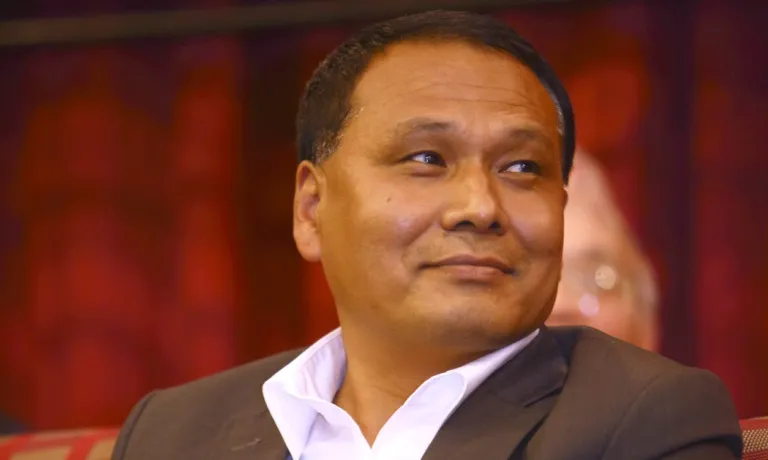Kathmandu – Kulman Ghising, the Executive Director of the Nepal Electricity Authority (NEA), announced plans to develop the 1,063 MW Upper Arun Hydropower Project through a model similar to that of the Upper Tamakoshi Hydropower Project if the World Bank decides against financing it. Speaking during a project monitoring visit in Bhotkhola Rural Municipality, Sankhuwasabha, Ghising assured that the ambitious project, vital for Nepal’s energy sector and economy, will proceed regardless of external financing challenges.
Ghising emphasized that if the World Bank opts out, NEA will mobilize investments from domestic banks, financial institutions, and Nepali investors both at home and abroad. The World Bank had initially prioritized the project, planning to lead a consortium with the Asian Development Bank (ADB), Japan International Cooperation Agency (JICA), and other partners to raise approximately $2 billion for the project.
“We are holding administrative and diplomatic discussions to secure the World Bank’s involvement. However, if it does not materialize, we will proceed by issuing shares to Nepali investors and leveraging domestic financial institutions,” Ghising said.
Mixed Financing Model for Upper Arun
The NEA plans to implement a “blended financing” model, involving concessional loans from international multilateral partners, equity contributions from stakeholders, and domestic bank loans. The estimated project cost, including construction interest and inflation adjustments, is $1.75 billion (approximately NPR 214 billion), with 70% coming from loans and 30% from equity.
Key stakeholders in the equity structure include the Government of Nepal, provincial and local governments in affected areas, project-affected residents, and the general public nationwide. The project will also offer 49% of its shares to the public.
A Memorandum of Understanding (MoU) has already been signed with Hydro-Electricity Investment and Development Company Ltd. (HIDCL) and domestic banks to raise NPR 53 billion through co-financing.
Project Timelines and Progress
Preparatory work is underway to begin construction in early 2026, with completion targeted by 2031. Nearly 99% of the compensation for the acquisition of 232.14 hectares of private land required for the project has been distributed, and resettlement efforts for 22 displaced households are ongoing. Environmental and social impact studies suggest minimal adverse effects.
The project is designed to operate at full capacity for six hours daily during winter, producing an annual 4.53 billion units of energy, with approximately 30% generated during the dry season. The generated electricity will be transmitted via a 400 kV transmission line to the proposed substation at Hightar, Sankhuwasabha.
Additional Initiatives
As part of the broader Upper Arun project, the NEA is also advancing the 40 MW Ikhuwa Hydropower Project, included under the “People’s Hydropower Program.”
The NEA remains committed to ensuring the project’s success, stating that the Upper Arun Hydropower Project will be transformative for Nepal’s energy security and economic growth.



 About Us
About Us
Comment